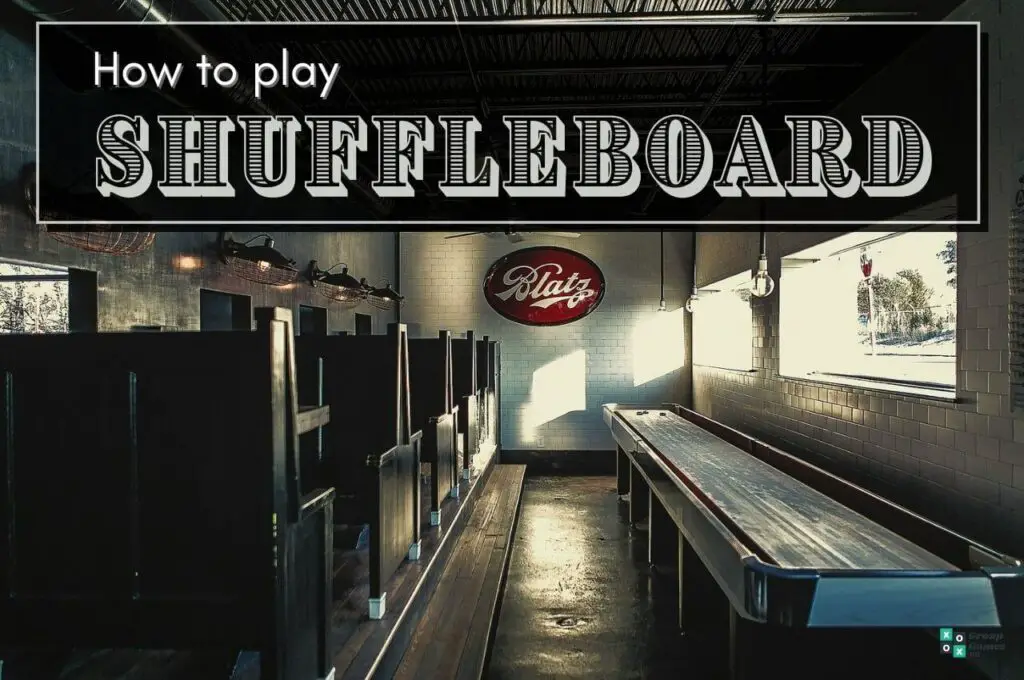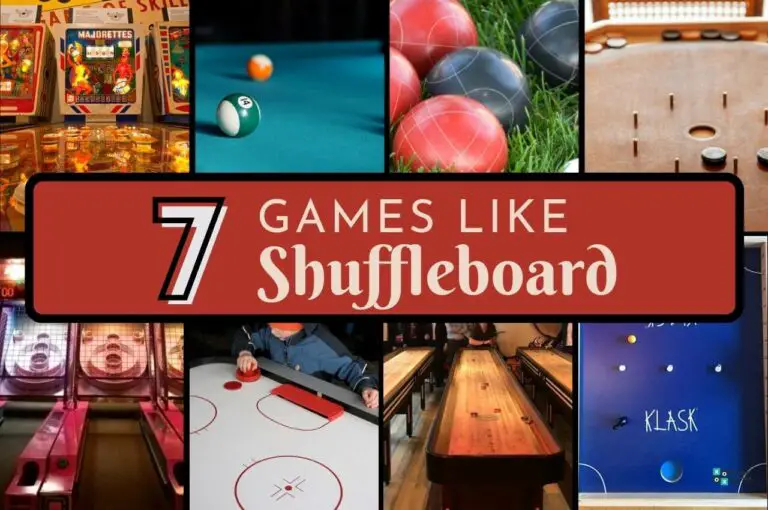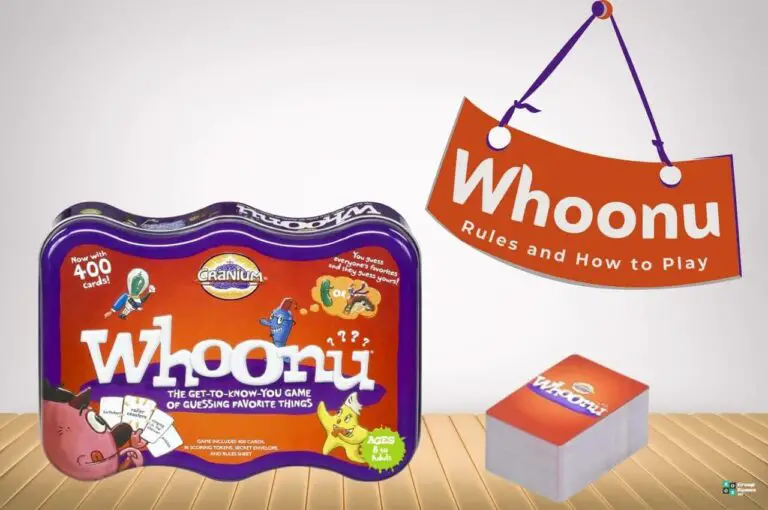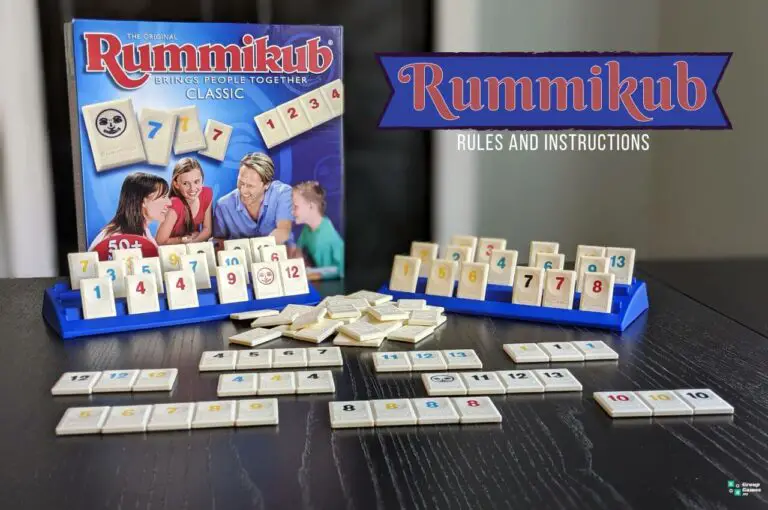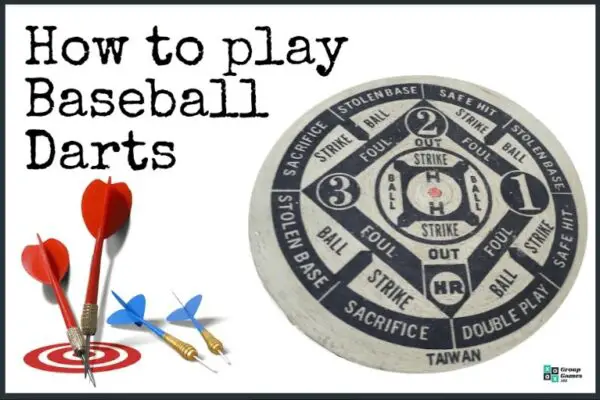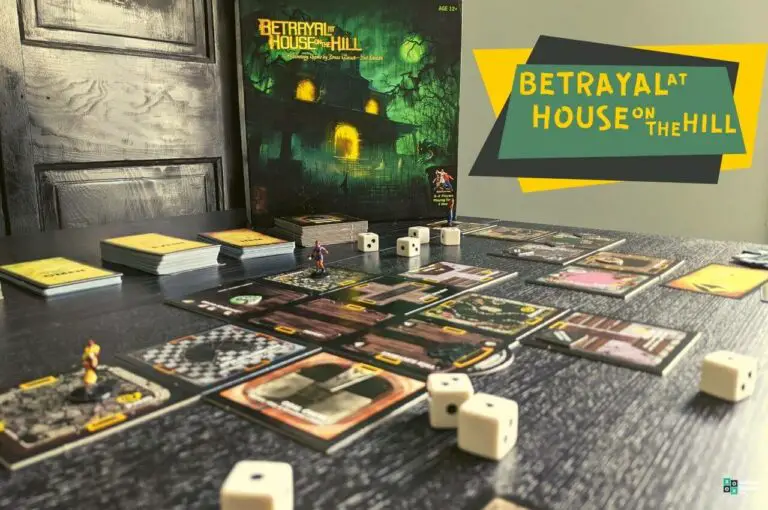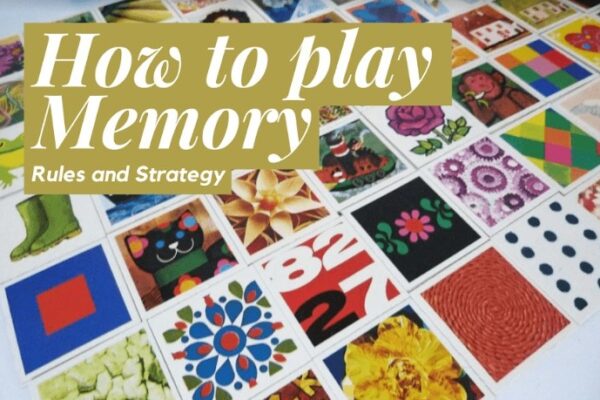Shuffleboard or Table Shuffleboard, is a popular pluck and board game that involves competitive scoring. Read this guide to learn the Shuffleboard rules and how to play.
You and I know the game as the American Shuffleboard but the game is loved far and wide for its extensive local variants. For instance, the Dutch variation of Table Shuffleboard is called Sjoelen and is heavily influenced by the billiard. On the other hand, the British variation involves a miniature form of the game that is played with coins and is coined as Shove ha’penny.
Shuffleboard game rules are pretty easy as long as you have a grasp over tactic and strategy. The National Shuffleboard Agency defines the official shuffleboard game rules in the United States, the Canadian rules are dictated by a dedicated body called the Canadian Shuffleboard Congress.
For an easier understanding of the game rules and instructions, this article will help you.
What Is a Shuffleboard?
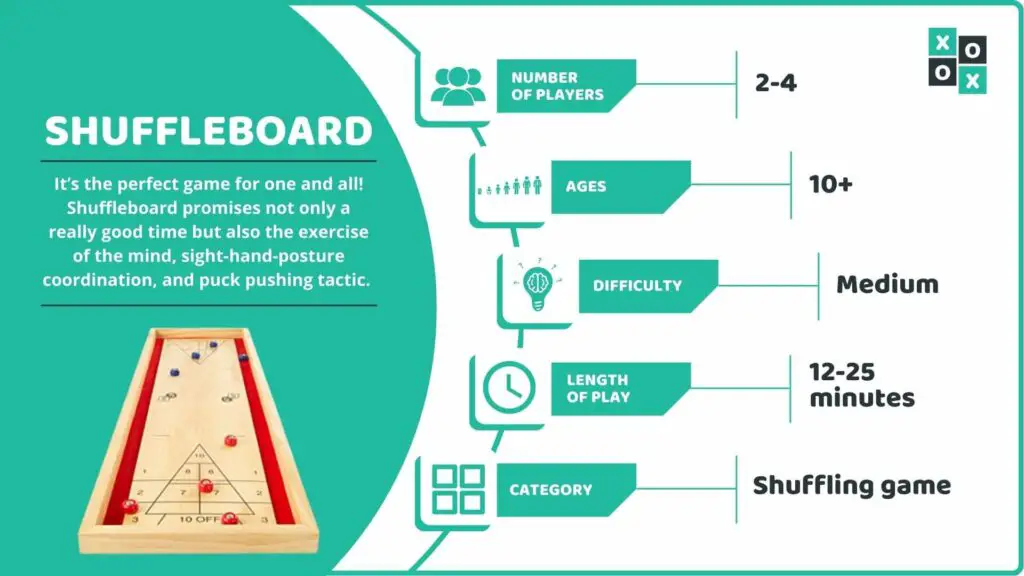
Shuffleboard is a game of shuffling (or sliding/pushing) the weights called pucks in designated regions at the opposite end of the table. Each player aims at taking a shot that perfectly lands the puck in a spot that either helps increase their score or block their opponent’s score.
Number Of Players: 2 or 4
Ages: 10 and above (in case of kids, height matters more than age)
Difficulty: Medium
Length of Play: 12-25 minutes.
Main Objective: Gain maximum scores by shuffling the pucks in the higher scoring zones of the table.
Why We Love It: It’s the perfect game for one and all! Shuffleboard promises not only a really good time but also the exercise of the mind, sight-hand-posture coordination, and puck pushing tactic. The rules couldn’t get easier, but the strategy is a fairly hard nut to crack, giving the game the right balance.
A Look Into The History Of Shuffleboard
The farthest that we can go back in time to trace American Shuffleboard’s history is about 500 years ago. This game finds its origins in the classic deck or floor shuffleboard that was played with long cue sticks and heavier weights. This classic version is known to have originated in Europe. However, the origin of the table variant is still a mystery.
The ‘American’ prefix is most likely attached due to its popularity in the country.
Shuffleboard Game Equipment: What You Need For The Set-Up
As long as you have the shuffleboard table and the pucks, there’s hardly any set-up required for this game. To help you find the right equipment, let’s quickly cover the specifics;
Shuffleboard Table
– Measures around 2.5 feet in height and 9 feet in length – up to 22 feet in official tournaments.
– The table is approximately divided into three equal sections — two scoring sections at either ends and the middle plain section.
– The scoring sections are further divided into three regions; the one towards the very edge is marked number 3, whereas regions marked 2 and 1 follow towards the inner middle section.
– Region 3 and 2 are of the same dimensions — 6 inches in length.
– A foul line marks the end of region 1 and the beginning of the middle section. In some recreational boards, all regions are of the same dimensions.
– The markings are visible in the form of horizontal lines spanning the width of the table.
– The scoring sections leave a uniform strip of space on all sides called the alley or the gutter.
– For optimal results, find yourself a shuffleboard table with a smooth surface and durable build like this one by Atomic Store. It also packs in 8 pucks and Shuffleboard Wax so that you’re all set!
This table offers all the fun of a classic 22 inch shuffleboard table in a 9' table that can fit in almost any space. With high-quality materials and a stylish, modern design, the Platinum Shuffleboard Table will be the perfect addition to your rec room.
Shuffleboard Pucks
– 8 plastic and metal weights called pucks are used for shuffling.
– Generally divided into two groups for two players/teams — red and blue — with 4 pucks in each.
– Pucks are placed in the middle section, close and parallel to the foul line before taking the shot.
Shuffleboard Rules and Gameplay Instructions
According to the official shuffleboard rules, the game is played in three segments, a match divided into a set number of frames that are further divided into several rounds.
The players begin from the same end of the table and choose their respective puck colors. In the case of 4 players (2 teams), the game is played from both ends of the table, with one player from a team at each end. The players alternate turns after shooting each shot or shuffling one puck.
An Ideal Shuffle
A player tries to slide or shuffle the puck to the farthest ‘safe’ end of the table in an ideal shuffle. By safe, we mean that the puck should not slide far enough to fall into the alley. A puck that falls into the alley is removed for the round and doesn’t stand a chance to contribute to a score.
For instance, if player Red shuffled the first puck to region 2, player Blue will aim to shuffle a puck to region 3 to score points.
Playing A Round
One round of shuffleboard consists of each player shuffling all the four pucks. Towards the end of the round, the scores are calculated. The player with the furthest puck scores points corresponding to all the pucks that beat the opponent’s best shot.
Let’s continue the above example. Say after one round (all four shuffled pucks); the scoring region looks like this:
| Red | Blue | |
| Puck 1 | Region 2 | Region 2 |
| Puck 2 | Region 3 (closer to the edge) | Region 3 (closer to region 2) |
| Puck 3 | Region 1 | Region 2 |
| Puck 4 | Region 3 (center of the region) | Region 2 |
Here, we will first see the puck that is closest to the table’s edge, which is Red puck 2. This means that regardless of player blue being in the same region, player Red wins the round. How the winning player’s scores are calculated will be covered below.
Once a round is complete, both players or teams switch places and move to the opposite end of the table. The next round begins with the pucks stationed at the scoring regions from previous rounds.
Scoring In A Round
Scores in each region correspond to the number of the region. If the puck stops at the intersection, the lower value region is added to the score.
This is best understood with an example, so let’s continue what we discussed above.
Player Red wins the round, so the score will be the sum of points obtained through pucks that are further than the farthest blue puck. In this case, Blue puck 2 is the farthest, so every Red puck farther than that will add up to the score.
Only 2 Red pucks, numbered 2 and 4, have made it beyond Blue puck 2. Therefore the score will be 3+3= 6. Hence, player Red wins the round with 6 points.
Playing A-Frame
A frame is marked by a predefined number of points obtained by adding the scores of different rounds. The total generally is either 15 or 21.
When one of the players or teams reach the pre decided total, that player wins the frame. In the above example, player Red needs either 9 or 15 points to win the frame.
Also Read: 7 games like Shuffleboard
Winning The Game
Ultimately, the player who wins the maximum number of frames wins the match or game.
How to Play Shuffleboard (Video Tutorial)
Frequently Asked Questions
Which Are The Most Popular Variations Of Shuffleboard?
Knock Off, Horse Collar, Tap and Draw are the most popular variations of Table Shuffleboard with simple tweaks in the rules here and there.
What Happens If A Weight Doesn’t Cross The Foul Line On The Table?
If a player fails to slide a puck beyond the foul line closest to the shooting section, the puck is removed for the round and does not contribute to the score.
What Is A Hanger Point?
Hanger point is the unique condition where a player can score 4 points if the puck hangs at the extreme edge of region 3, stationed in a position where it can fall off into the alley.
Alternative Games You Must Try
Are the pucks weighing you down? Don’t worry; we’ve got several options for you to keep your spirits high.
If you’re in love with flicking things with technique and landing them in the right places, you just cannot miss Air Hockey. Besides, of course, our all-time favorite pool games like Bumper pool (easy but with bumper obstacles) and One-pocket pool (challenging and highly engaging).
If indoor games are your thing, you should also try game like Carrom (see Carrom Board rules) for a similar vibe.

